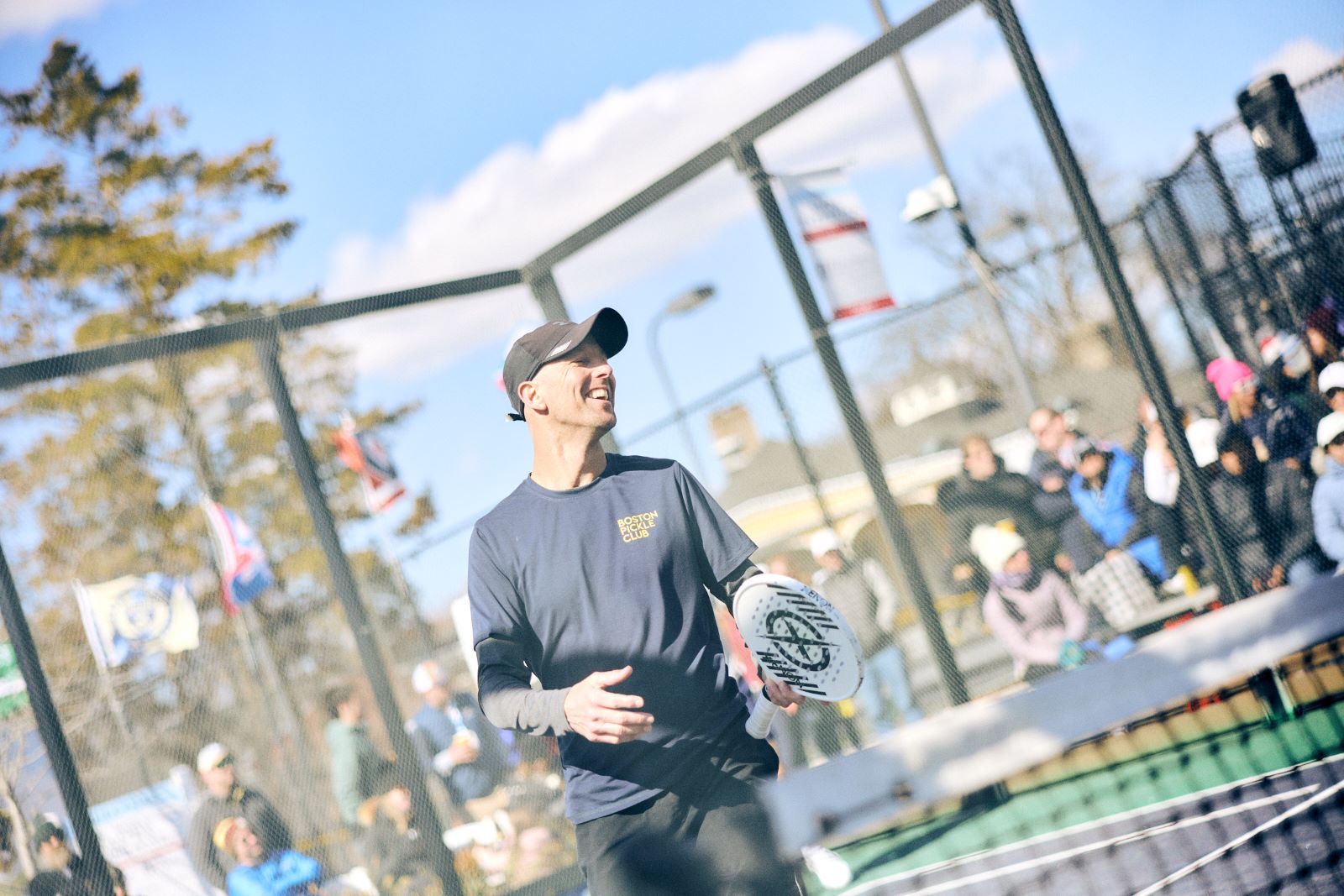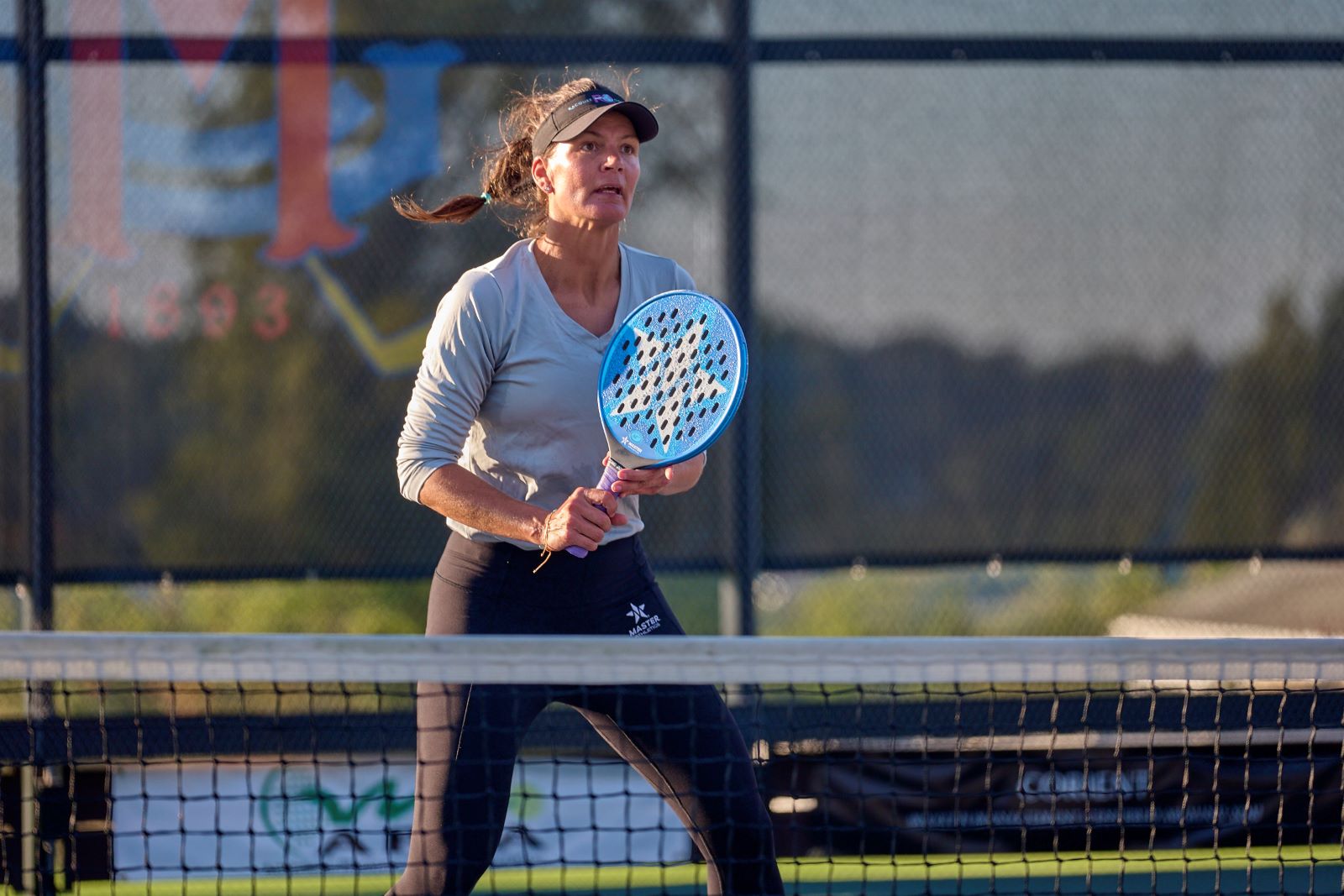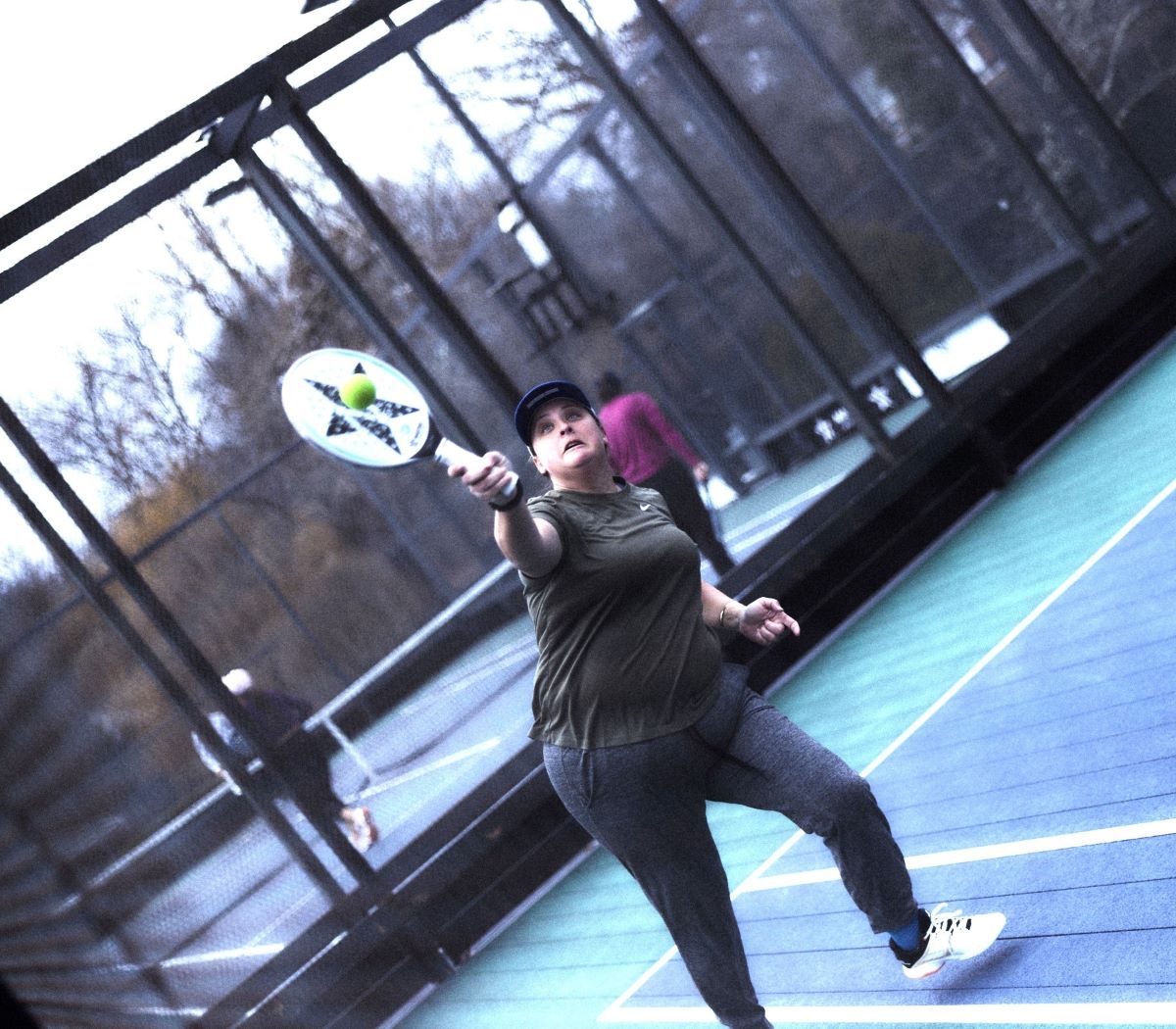NEWS
Everyday Player, Expert Advice: Paddle Tips That Stick

Learn how an everyday paddle player applies timeless lessons from top teaching pros to sharpen offense, extend points, and elevate her game.
By Nindy Pike
On the North Shore of Boston, I play at two clubs that do not have pros, and we do not have a women’s team league. I crave learning how to improve my game. Over the years at clinics and camps I have had the good fortune to learn from some of the best teaching pros in the game. These paddle gurus have given me access to higher-level shots, explained ways to lengthen points, and sharpened my naturally offensive game.
H
No More Roundhouse Karl Levanat giggled when I played a ball off the screen. “What are you doing?” I was using a full tennis backswing to get my paddle set under the ball to hit off the screen. Like a one-armed backstroke, all wrong. Now I know to use a slight knee bend and set my paddle early. You are welcome for the laughs, Karl.
Blitz Like You Mean It For years, every return was a chance to move forward. Full on blitzkrieg. Charlotte Sikora told me what I was actually doing was “blunting.” Hunting for an offensive shot, moving toward the service line, but never quite getting past it. A real blitzer knows to close. If I plan to blitz, it is timed well, has purpose, and I end up at the net. Oui, oui!
Hitting Your Marks I didn’t realize, until deep into my paddle education, that I was close to the right positioning but no cigar.
On the baseline, Johan du Randt explained, place one foot at the doubles alley and the other foot just inside the singles area. (Most converted tennis players tend to stand smack in the middle of the baseline.) From the “new” position, I can reach the side screen, the back screen, and the middle screen in one or two steps. Funny to learn that from the teradactyl himself.
During a serve and volley drill, Mark Innes yelled, “Where are you?” I thought I was running to the T, but I was adrift. When I looked down at my feet, I was randomly near the service line. Supporting my partner at net, especially as a short-ish person, I needed to be spot-on the T to reach better-placed balls. Small adjustments, big improvements.
Fake Out I love a good fake out – the look-away shot, the overhead drop shot, the volley lob. Working with Stephen Mitchell gave me carte blanche to get creative. He demonstrated how simple it was. The fake out is particularly effective when my opponents expect me to lob. I tip my racquet and then flatten it out and zing it. Or vice versa on an expected drive. Stephen is the king of holding his shot until the last second.
Twist It Like Dairy Queen I’m from the Continental Age of Tennis, where there was only one grip. This is extremely useful in paddle—my backhand and forehand grip are the same. My serve was hard and flat, until Paul Fairchild made me turn my grip a bit. I’m guessing Eastern, but don’t quote me on that. He told me to come around the ball a bit to add spin. (The Aussie accent made it all sound more interesting.) Having more variety on my serve keeps the returner guessing.
Run Like Hell This was free advice from John Hughes, after watching him do it many times in a game. The highlight was hearing him cheer me on when he saw me try it at a tournament. Just because a ball gets past me at net doesn’t mean the point is over. At first, I just got in some extra cardio, sprinting to the back screen. But with more practice, I was able to return the ball. I love the transition game. I’m happy to lose my breath to keep a point going as long as possible.
Bring The Hammer Vic Cran loves to teach attack mode. She set up a drill where I was at net on the ad side, and she was opposite in the ad side corner. She threw up a decent lob that I hit toward her, and then she threw up a short lob. I was told to turn my entire shoulder toward her and hit it as hard as possible, to either hit her nick, hit her, or hit the side-back screen, causing confusion with her partner. I could also try a subtle back-side roller on the second shot. Either way, fun, fun, fun!
A big thank you to all the amazing teaching pros who have shared their knowledge and helped me improve—your guidance has made all the difference on the court. I hope these tips encourage the “everyday” APTA player to make small adjustments for big rewards.


